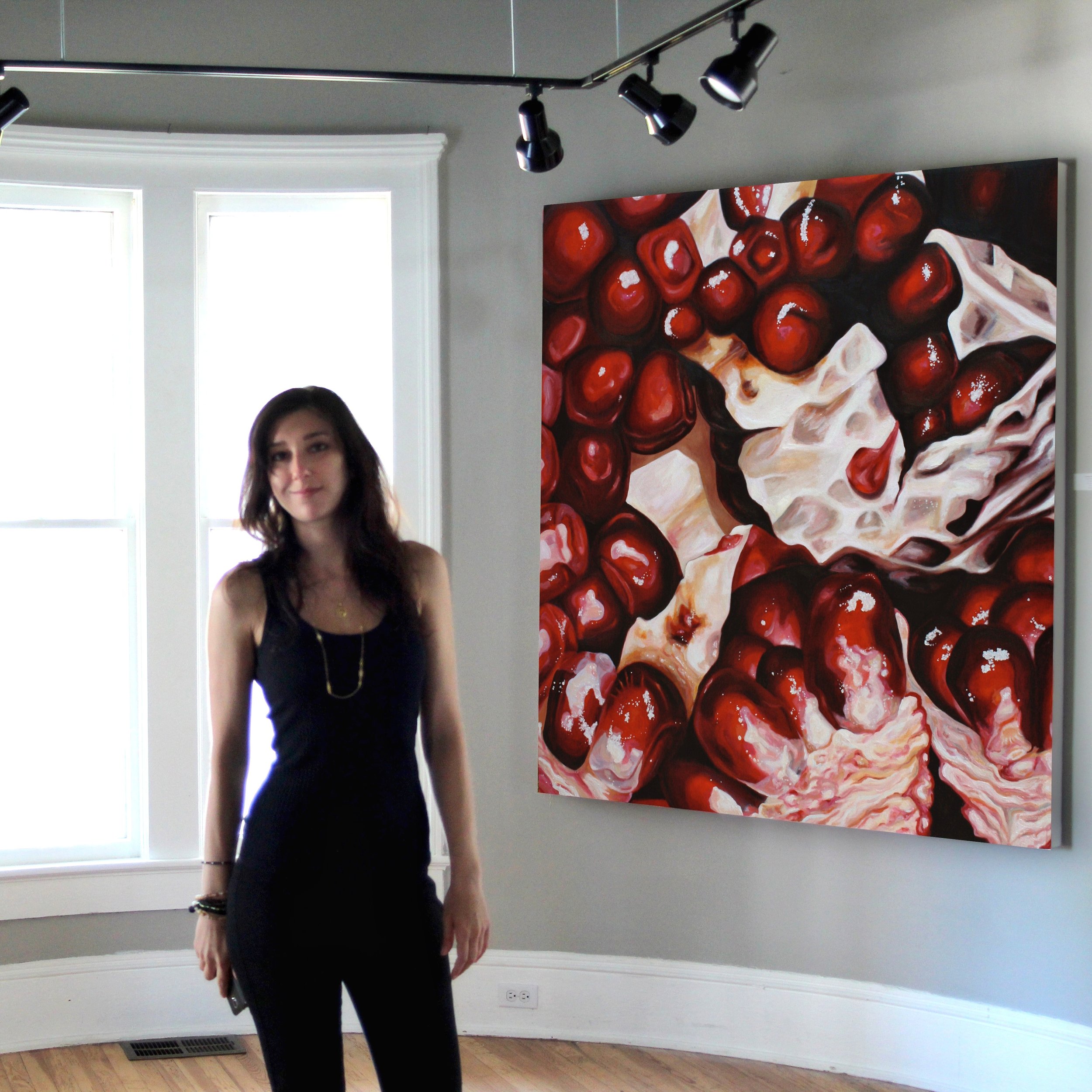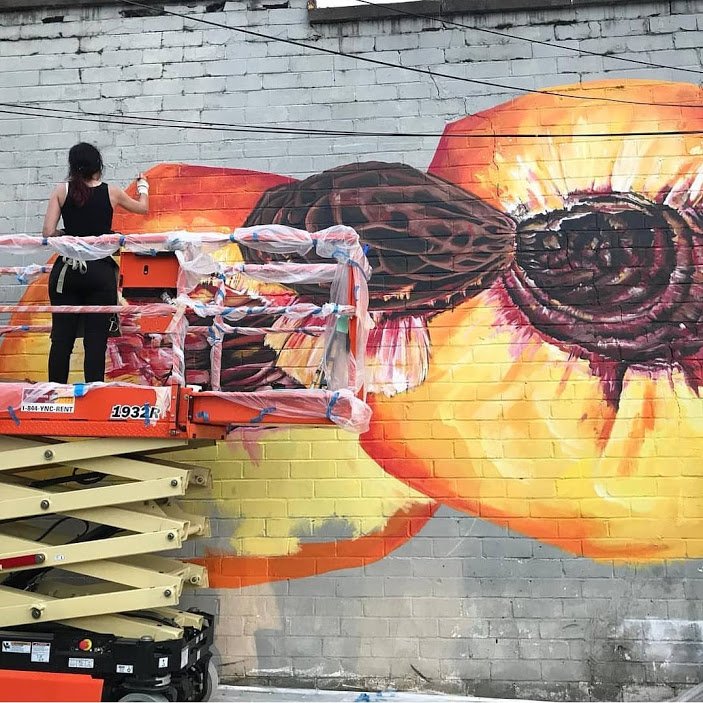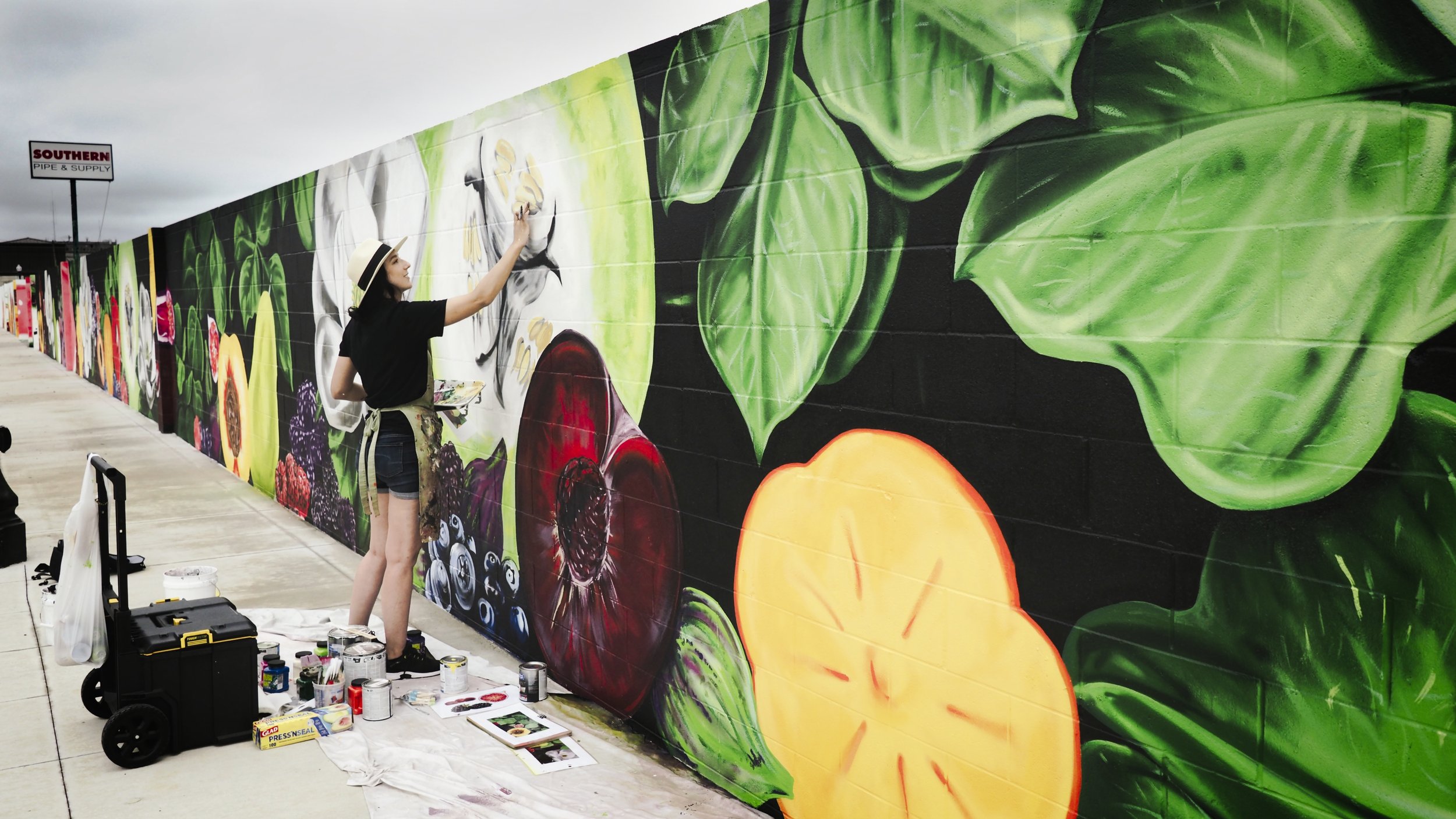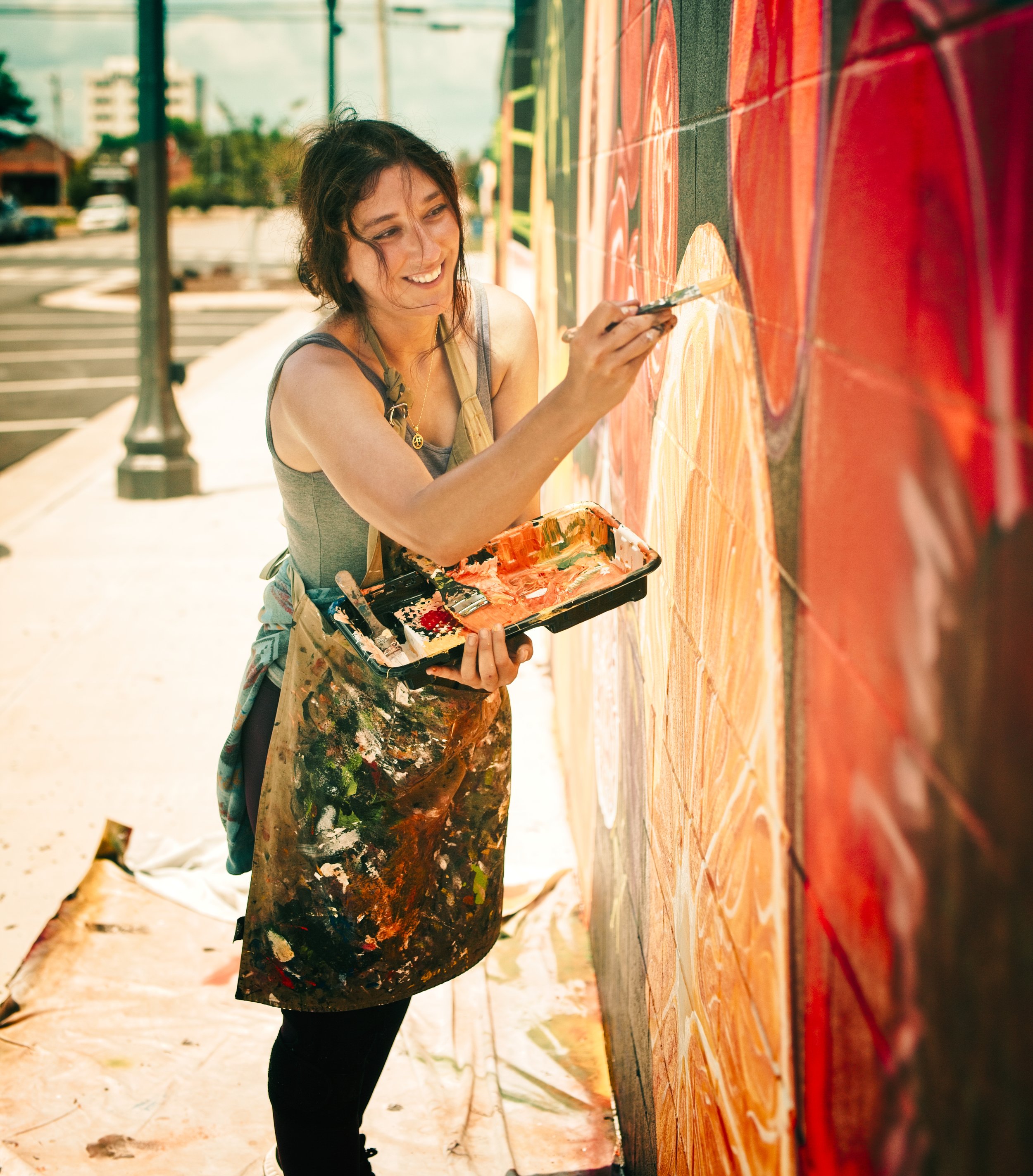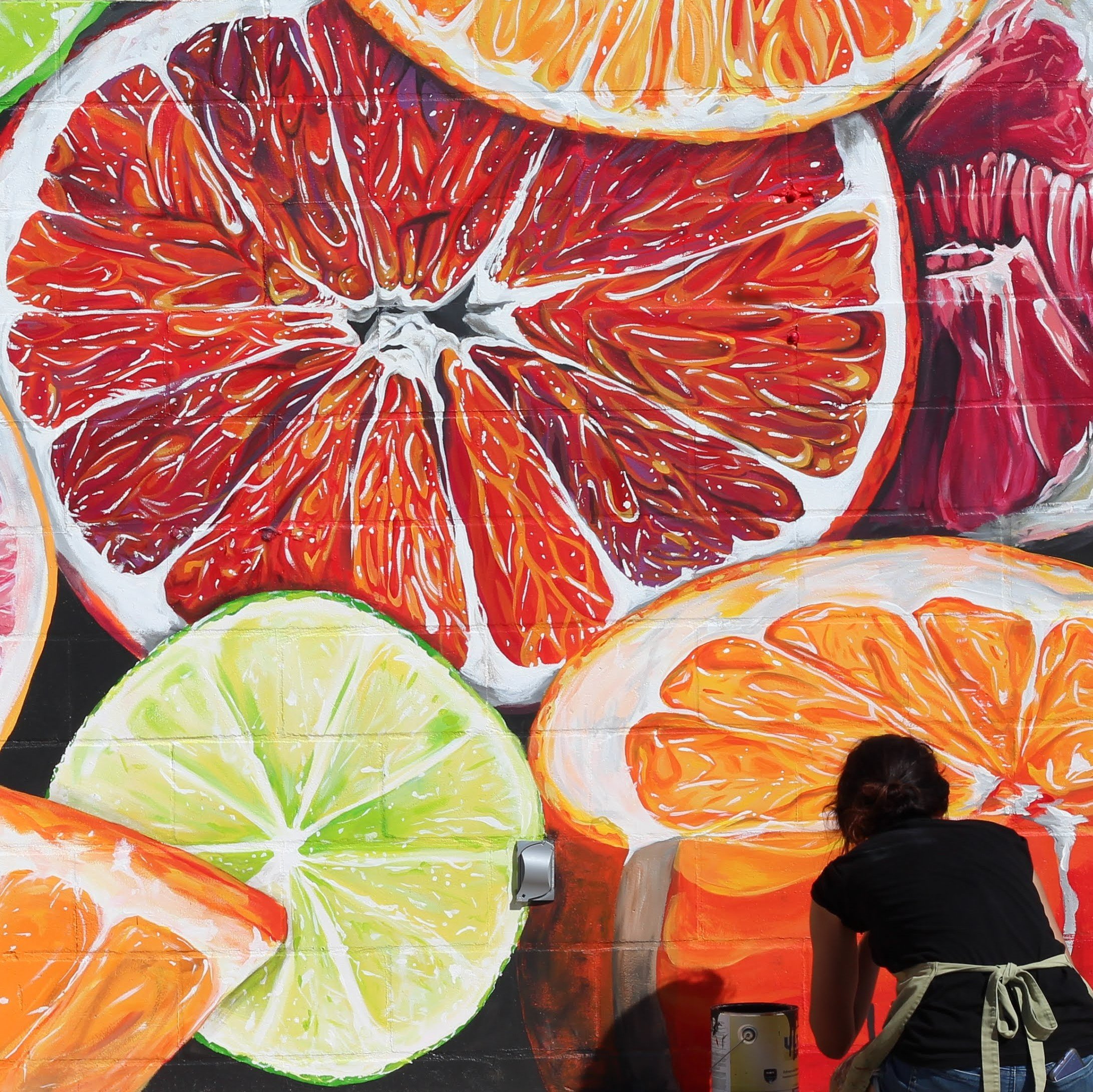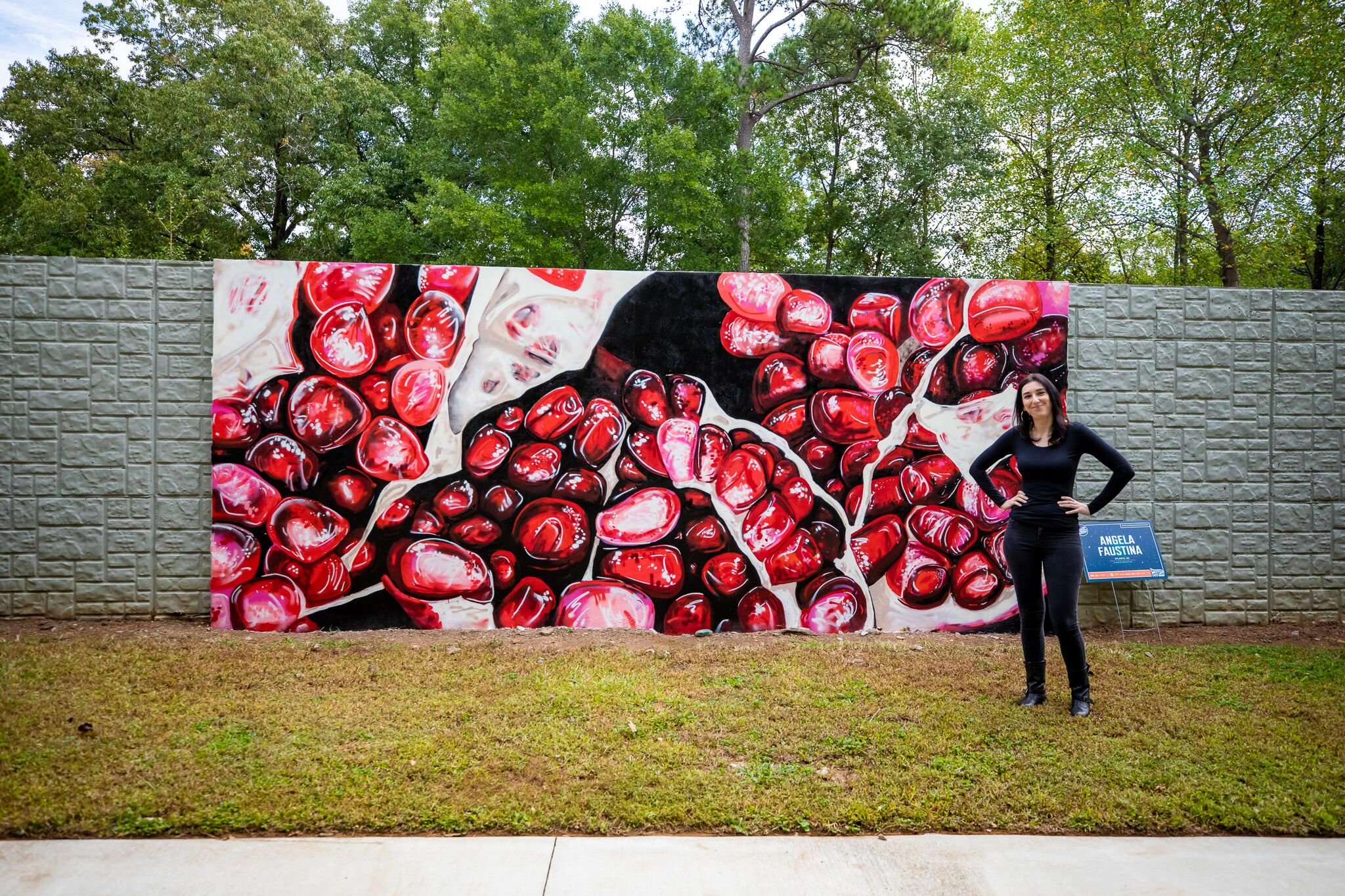Artist Spotlight: Angela Faustina
Angela Faustina's oil paintings depict ripe, juicy fruit in a unique and captivating manner, blurring the line between realism and idealism. Her attention to detail and vibrant use of color draws viewers into a world that transcends traditional still-life paintings.
By magnifying often overlooked details, textures, and patterns, Faustina's work bridges the gap between the universal and the personal, offering a perspective that reflects both strength and fragility. This heightened awareness and attention to intricacies mirrors the artist's own experiences with lupus, infusing her art with deeper meaning.
What initially drew you to the subject of fruits in your artwork?
Halloween is probably my dad’s favorite time of the year so when I was growing up, my family went all out. Every year we carved small jack-o-lanterns; the first step is cutting the top off the pumpkin and removing the pumpkin guts. The pumpkins were small so I couldn’t see what I was touching. I remember pulling up that first orange handful of dripping, gooey seeds and stringy pulp and squeezing my hand closed so it oozed between my fingers. I logically knew what I was seeing and where it came from but seeing it out of context was weird - it was beautifully colored and looked like it could have come from inside my body or off the ocean floor, like it wasn’t really meant to see the light of day but was too fascinating to put back.
I wanted to carry on our family’s jack-o-lantern tradition when I went away to college. The pumpkin patch we went to charged by circumference so I grabbed the tallest, narrowest pumpkin I could find (I think it is still the largest pumpkin I have ever carved!). At home, I cut the top off the pumpkin, peered inside, and was blown away by what I could finally see: layers upon layers of viscous, fibrous membrane and slimy seeds. It looked like orange alien spiderwebs. It was so different from the handfuls of pulp I was used to; the color inside the pumpkin seemed to darken between layers and the color temperature shifted from warm to cool where daylight reflected into the pumpkin. It looked like it felt in that early memory - weird but fascinating, alien yet familiar simultaneously.
I grabbed my camera and a macro lens and the pumpkin swallowed my arm to my shoulder. That was the start of a macro photography project. I photographed the insides of familiar fruits, like oranges and grapefruits, and then researched and found tropical and foreign fruits that I had never heard of before. I tore open fruit that was underripe, perfect for eating, and decaying. I actually started photographing the inside of everything - veggies, stairwells, garbage cans, bags of food - but the vibrancy, dimensionality, and organic “otherness" of zoomed-in, ripe fruit is still the only thing that holds my interest.
How do you approach capturing the essence of ripe, juicy fruit in your paintings?
I approach it with bright hues and lots of glossy medium! From a technical standpoint, fruit pulp can have such a high water content that painting it can be similar to painting a container or body of water. For example, while I paint pomegranate seeds, I keep in mind the color of the juice suspended in the seeds, what can be seen within or below the seeds, the surface of the seeds, and refracted and reflected light.
You describe your paintings as walking the line between realism and idealism. Can you elaborate on this balance in your work?
My paintings are a little too perfect to be completely photorealistic. I tend to omit imperfections like bruises on fruit and make small changes that will hold the audience’s gaze in a location longer, like an odd number of bigger highlights on an orange segment instead of a smaller number of even highlights, or pushing the midground of a blood orange further into the background so the foreground stands out more. They are little adjustments that have a big visual impact.
Could you describe the significance of magnifying overlooked details and textures in your work?
Enlarging often overlooked and minute elements, textures, and patterns found beneath the peel parallels the heightened awareness and attention that my body demands due to lupus. The dichotomy between vibrant color and delicate intricacies of my fruit paintings echoes the strength and fragility inherent to chronic illness.
What inspired you to create murals featuring your fruit compositions? What do you think is the difference in impact?
I wanted to give anyone who wants to see my work the ability and comfort to do so, and that meant crossing into public art. Due to scale or placement, several of my murals lost their feelings of intimacy. I do try to include lots of small details so viewers are as interested close up to the mural as they are when viewing it from across the street.
What challenges do you face when portraying the vibrant colors and delicate intricacies of fruit in your paintings?
My biggest challenge is that for the vibrant colors and delicate intricacies of the fruit to stand out, the entire painting can’t be vibrant and delicate. There needs to be a mixture of hues, shades, and shapes to lead the eye throughout the painting so it remains interesting.
Can you share any anecdotes or stories about the creation of a particularly memorable piece of fruit art?
Working on my first CITRUS MEDLEY piece for the 2018 SHINE St Petersburg Mural Festival was an interesting challenge! At the time it was my largest painting ever, Florida was in the middle of a heat wave, a hurricane grazed St. Pete halfway through the festival, and I only had 7 days to complete the mural! Luckily the people were wonderful, although a mother did storm up to me dragging her small son demanding “Did you get permission to paint this wall?!” Startled, I said yes,” The city itself permitted me to paint on the wall.” She then turned to her son and said “See?! Even ARTISTS need permission! Stop painting on my walls!!!!”
How do you maintain the balance between intimacy and boldness in your paintings?
I try to lure the audience in from across the room with bold colors and shapes, and then get them to linger in front of the painting with small, intimate details.
What role does symbolism play in your artwork, particularly concerning the subject of fruit?
The idea of fruit’s cultural and art historical symbolism is very appealing to me. It’s overwhelmingly positive and tends to reflect things like fertility, health, wealth, and good fortune. My artwork focuses on the beauty and vibrancy of life, so it just adds another psychological layer to the paintings. I was interested to find out that many cultures gift fruit art for special occasions to welcome those attributes into the home.
'CITRUS MEDLEY VI, 2024'

